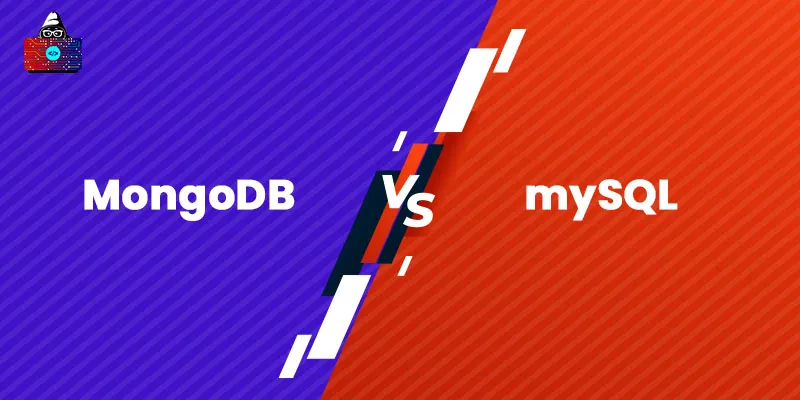With vast amounts of data being generated all over the world, the need for a robust database that can provide high-performance data storage solutions has arisen. As the data generated is mostly semi-structured or unstructured, relational database management systems are unable to handle them efficiently.
Companies and organizations need an alternative to relational database management systems that can handle the heaps of unstructured and semi-structured data. This is where non-relational or NoSQL databases come into the picture.
This article is dedicated to explaining one of the most popular NoSQL databases, MongoDB. But before diving deep into the topic, let us first understand what exactly NoSQL databases are.
Later in the article, we will introduce you to MongoDB, its characteristics, and how it works. Also, you will get acquainted with the differences between MongoDB and a relational database management system (RDBMS). Finally, we shall discuss the pros and cons of MongoDB.
What are NoSQL Databases?
Unlike relational databases , NoSQL databases, also known as ‘not only SQL,’ are databases that store data in a non-tabular format. Alternatively, we can say that databases that store data in a format other than tables are NoSQL databases. Some popular NoSQL databases include MongoDB, HBase, Cassandra, Amazon SimpleDB, CouchDB, and CouchBase.
NoSQL databases are available in four different types, namely, document, key-value, graph, and wide-column store. Let us briefly understand each of these types below:
- Document Database: As its name implies, this type of database stores data in documents analogous to JavaScript Object Notation (JSON).
- Key-Value Database: This database stores each data item in the form of a key and value pair.
- Wide-Column Stores: Data in this database is stored in tables, rows, and dynamic columns.
- Graph Database: This type of database uses a graph-like structure to store data. While the nodes of a graph contain the actual data, the edges represent the relationships between the data on the nodes.
What is MongoDB?
MongoDB is an open-source, document-oriented NoSQL database developed using C++, Python, and JavaScript. Licensed under the Server Side Public License, MongoDB was initially released in 2009 by MongoDB Inc. It is a cross-platform database program compatible with Solaris, FreeBSD, OS X 10.7 and later, Windows Vista and later, and Linux.
In general, MongoDB uses collections and documents to store high volumes of data. Also, the databases, collections, documents, and data in MongoDB are interrelated. A database consists of collections, which are a set of documents. Moreover, documents store data in the form of a key-value pair. MongoDB stores data records as BSON documents, and BSON implies the binary representation of JSON documents.
MongoDB also offers a cloud database service called MongoDB Atlas. This service enables developers to deploy cloud databases across cloud computing platforms, like AWS, Google Cloud, or Microsoft Azure.
Features of MongoDB
Following are some salient features of MongoDB:
1. Supports Ad-hoc Queries
While designing a database scheme, the types of queries that end-users will execute are completely unknown. An ad-hoc query is a loosely typed query or short-lived command created at runtime whose value depends on some variable.
Every time we execute an ad-hoc query, it results in a different value depending on the variable. Ad-hoc queries save system resources as they are created on-demand dynamically by end-users at runtime. MongoDB supports range queries, field queries, and regular expressions searches.
2. Indexing
Indexing helps to improve the performance of the database and increases search speed by reducing the number of disk accesses required while the query is being processed. The MongoDB database increases the search speed of data by indexing each field in the documents with primary and secondary indices.
Suppose indexing is not used in a database and an end-user submits a query to access a particular data item. In that case, it searches that item in each document, which is highly time-consuming and inefficient.
3. Replication
If the data is present on a single database, it becomes impossible to access it in case of a server crash, hardware failure, or service interruption. Therefore, having a backup of data is essential in such cases. There is no concern regarding data loss in MongoDB as it creates multiple copies of the data and sends them to different servers. Therefore, even if one server fails, you can retrieve your data from another server.
4. Sharding
Sharding means splitting a large amount of data into smaller units and distributing them across multiple hosts. MongoDB uses a shard key to split data into multiple chunks and evenly distribute those chunks across MongoDB instances, called shards. This even distribution of data enables MongoDB to offer horizontal scalability.
5. Schema-less Database
One of the greatest features of MongoDB is that it provides a schema-less database, which means one collection can hold different types of documents. Alternatively, it is a database that contains multiple documents, where each document may have a different number of fields and content. Therefore, MongoDB is more flexible than relational databases.
6. Aggregation
Aggregation operations in MongoDB group data from different documents and perform operations on that grouped data to get back a single or computed result. Three aggregation operations in MongoDB are:
- Aggregation Pipeline.
- Single-Purpose Aggregation Methods.
- Map-reduce Function.
How Does MongoDB Work?
MongoDB is a database server that enables us to create as many databases as required. Also, MongoDB stores data in collections and documents. The below diagram will help you to understand the data storage structure in MongoDB:
- As relational databases contain multiple tables, MongoDB contains multiple collections and documents.
- A single MongoDB database can have multiple collections, and a single collection can have multiple documents.
- In MongoDB, it is not necessary that documents in a collection should be similar, as it is a schema-less database.
- A document stores data records in the form of a key-value pair called a field. Fields in MongoDB documents are similar to columns in relational databases.
- The fields in documents can hold values of any BSON data types, like boolean, double, string, object, array, objectId, binary data, etc.
- All documents take BSON format, i.e., the binary representation of JSON documents. MongoDB converts JSON data into binary format, which is easier to query.
- It supports embedded or nested documents, i.e., a document inside another document. Such nesting of data helps us to create relationships among data.
Difference Between MongoDB and RDBMS
The below table shows key differences between MongoDB and RDBMS.
| RDBMS | MongoDB |
| A relational database management system stores data in a tabular format, i.e., in columns and rows. | A MongoDB database contains collections, where each collection consists of multiple documents. Documents store data in the form of key-value pairs, called fields. |
| RDBMS is not suitable for storing hierarchical data. | It is an ideal database for storing hierarchical data. |
| It supports ACID properties (Atomicity, Concurrency, Isolation, and Durability). | MongoDB supports the CAP theorem (Consistency, Availability, and Partition Tolerance). |
| RDBMS is relatively slower than MongoDB in terms of performance. | It offers high performance as compared to RDBMS. |
| It uses joins to combine rows and columns of multiple tables, depending upon a common field. | MongoDB uses embedded or nested documents when documents have one-to-many relationships between them. An embedded document is a normal document inside another document. |
Advantages and Disadvantages of MongoDB
Following are the advantages and disadvantages of MongoDB:
Advantages
- As MongoDB is a schema-less NoSQL database, there is no need to design a database’s schema. Also, you can store any type of data. Therefore, MongoDB offers flexibility to its users for storing different types of data.
- MongoDB eliminates the need to use complex joins as there is no relationship among the data in MongoDB.
- You can easily install and set up MongoDB.
- MongoDB enables us to easily store arrays and objects as it uses JSON format to store data.
- Sharding in MongoDB makes it a more efficient and high-performance database than relational databases.
- Most of the data in MongoDB is present in its RAM, which enables faster retrieval of data. This, in turn, results in faster query execution.
Disadvantages
- One of the major downsides of MongoDB is that it consumes high memory for data storage.
- MongoDB does not support transactions.
- Each document in MongoDB has a size limit of 16 MB.
Conclusion
Relational databases lack scalability and do not support unstructured data . MongoDB, on the other hand, overcomes such issues as it offers impressive scalability and supports unstructured data. We hope this article has helped you understand MongoDB as we covered its features, working, advantages and disadvantages.
Learning MongoDB would be beneficial if you want to become a database administrator or back-end developer. You can kick-start your MongoDB learning journey by pursuing a specialized MongoDB online course or certification program.
People are also reading:
![What is MongoDB? [Overview, Features, Advantages]](/media/new_post_images/What-is-Mangodb.webp)



Leave a Comment on this Post